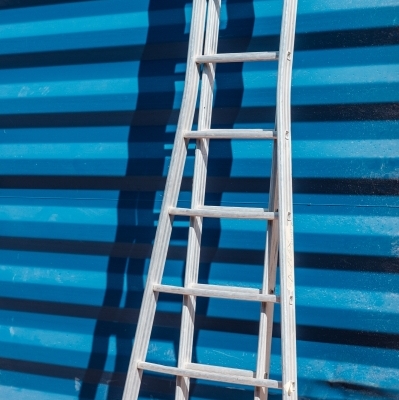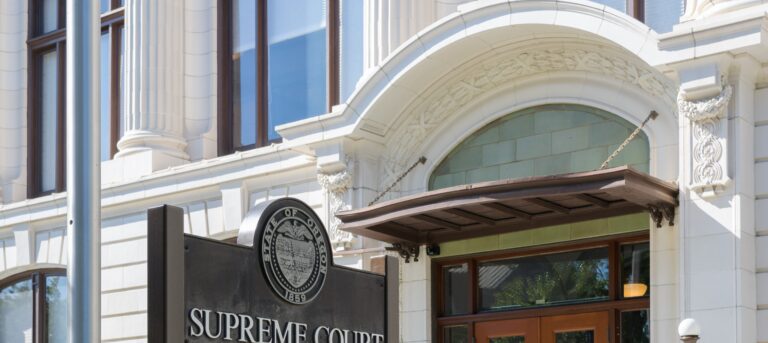Washington Case Law Update: Summary Judgment Affirmed After Plaintiff Fails to Provide Evidence Showing the Cause of a Fall
Washington Case Law Update: Summary Judgment Affirmed After Plaintiff Fails to Provide Evidence Showing the Cause of a Fall From the desk of Kyle D. Riley:
Claims for negligence in Washington require a plaintiff to prove (1) duty, (2) breach, (3) injury, and (4) proximate causation. If a plaintiff has 11 different theories potentially establishing liability, will that be sufficient to raise a jury question if the plaintiff is unable to prove how the incident occurred? Will the claim be subject to dismissal by summary judgment? Read on to find out.
Claims Pointer: In this unpublished personal injury case, a man was seriously injured when he fell from a ladder while helping a friend work on a structure. The man filed a negligence lawsuit against the friend with an alternative theory of res ipsa loquitor. During discovery, both the plaintiff and his friend testified that they did not know how the fall occurred, nor what caused it. The defendants moved for summary judgment on the basis that the plaintiff failed to provide evidence relating to what caused the plaintiff’s fall. The trial court granted summary judgment and the plaintiff appealed. The court of appeals affirmed the trial court’s grant of summary judgment, finding that the plaintiff’s failure to provide evidence of cause was fatal to his suit as a matter of law and the doctrine of res ipsa loquitor was unavailable.
Clarke v. Nichols et al., Wash. Ct. of App., No. 35477-6-III (January 3, 2019) (unpublished).
In the spring of 2013, Michael Clarke (“Plaintiff”) accompanied his friend Jay Nichols to a property owned by Mr. Nichols and his sisters (collectively, “Defendants”) to help spruce up a shed. Plaintiff was experienced with the type of work they aimed to accomplish, which involved climbing ladders to install soffit to the shed. Mr. Nichols had set up two A-Frame ladders in anticipation of the project. The ladders were wooden, approximately six-feet tall, and set about six-feet apart on “fairly level, packed dirt.” Mr. Nichols held the ladder while Plaintiff ascended it, then turned around to climb the other ladder when Plaintiff reached the top. The next thing either man knew, Plaintiff was on the ground with “his feet above his head” and complaining of blurred vision. Mr. Clarke rushed Plaintiff to the hospital where he was treated for several serious injuries.
Plaintiff filed a lawsuit against Defendants seeking compensation for his injuries. He alleged 11 facts—which he claimed “would allow a reasonable juror to find both negligence and proximate cause”—including, among others, failing to properly inspect the ladder, failing to ensure that the ladder could hold Plaintiff’s weight, and placing the ladder on “fairly level soil” rather than a “level support surface.” Plaintiff further alleged that the doctrine of res ipsa loquitor—a legal doctrine which would relieve Plaintiff of his duty to prove causation—was available. Defendants moved for summary judgment, arguing that Plaintiff had failed to provide evidence of proximate cause. The trial court granted the Defendants’ motion for summary judgment and dismissed Plaintiff’s claims.
Plaintiff appealed. He argued that the trial court erred in dismissing his claims because the 11 facts he identified could have led a reasonable juror to find negligence and proximate causation and, alternatively, liability could be found under a theory of res ipsa loquitor.
The court first analyzed Plaintiff’s negligence claim. An injured party must provide evidence of the following elements: (1) duty; (2) a breach of that duty; (3) a resulting injury; and (4) proximate causation. Proximate causation is comprised of two distinct theories: actual cause and legal cause. The court limited its analysis to actual cause and defined it as the “but for” cause of the injury. In other words, but for Defendants’ actions, Plaintiff would not have been injured. In order to meet this burden, he was required to establish “a direct, unbroken sequence of events that [would] link the actions of [Defendants] and the injury to the [P]laintiff.”
Importantly, the court noted that whether [Defendants’] acts were the cause in fact of [Plaintiff’s] injury is generally a question left to the jury. However, when the facts are plain and “not subject to reasonable doubt or a difference of opinion”—or if the evidence “is so lacking that only by speculating can the injury be linked to [Defendants’] acts”—the claim may be subject to dismissal through summary judgment.
Because Plaintiff’s lawsuit was dismissed on summary judgment, the court was required to determine if Plaintiff’s proffered evidence was “so lacking that only by speculating” a jury could link the injury to Defendants’ actions. After identifying that Plaintiff provided no actual evidence of how the ladder fell, the court affirmed the dismissal of Plaintiff’s claim, stating that Plaintiff lacked “any evidence from which a reasonable juror could find, without speculating, that one of his 11 theories explains his fall.” Accordingly, the court held that Plaintiff’s “effort to establish the essential element of proximate cause fails as a matter of law.”
Plaintiff’s alternative theory, res ipsa loquitor, was similarly unconvincing to the court. The court noted that a successful res ipsa loquitor claim requires the plaintiff to show that the injury causing event: (1) does not ordinarily occur in the absence of negligence; (2) is caused by something or someone under exclusive control of the defendant; and (3) was not caused—in part or otherwise—by the acts or omissions of the plaintiff.
The court noted that the ladder “was not within Mr. Nichols’s exclusive control and it cannot be determined that [Plaintiff’s] own action was not a cause of his fall.” Further, the court could not say that falls from ladders do not usually occur in the absence of negligence. On the basis of these reasons alone, the court affirmed the trial court’s dismissal of Plaintiff’s res ipsa loquitor theory claim for relief.
NOTE: This opinion has not been published. It is provided to demonstrate how the court approaches the issues involved in the case. There are limitations on citing unpublished opinions in WA, consult GR14.1(a)-(d) prior to relying on unpublished opinions.
View full opinion at: https://www.courts.wa.gov/opinions/pdf/354776_unp.pdf
To email Kyle Riley, please click here.
To view the most recent Oregon Case Law Update: Oregon Supreme Court Limits the Applicability of Oregon’s Statute of Repose in Product Liability Actions, please click here.

















